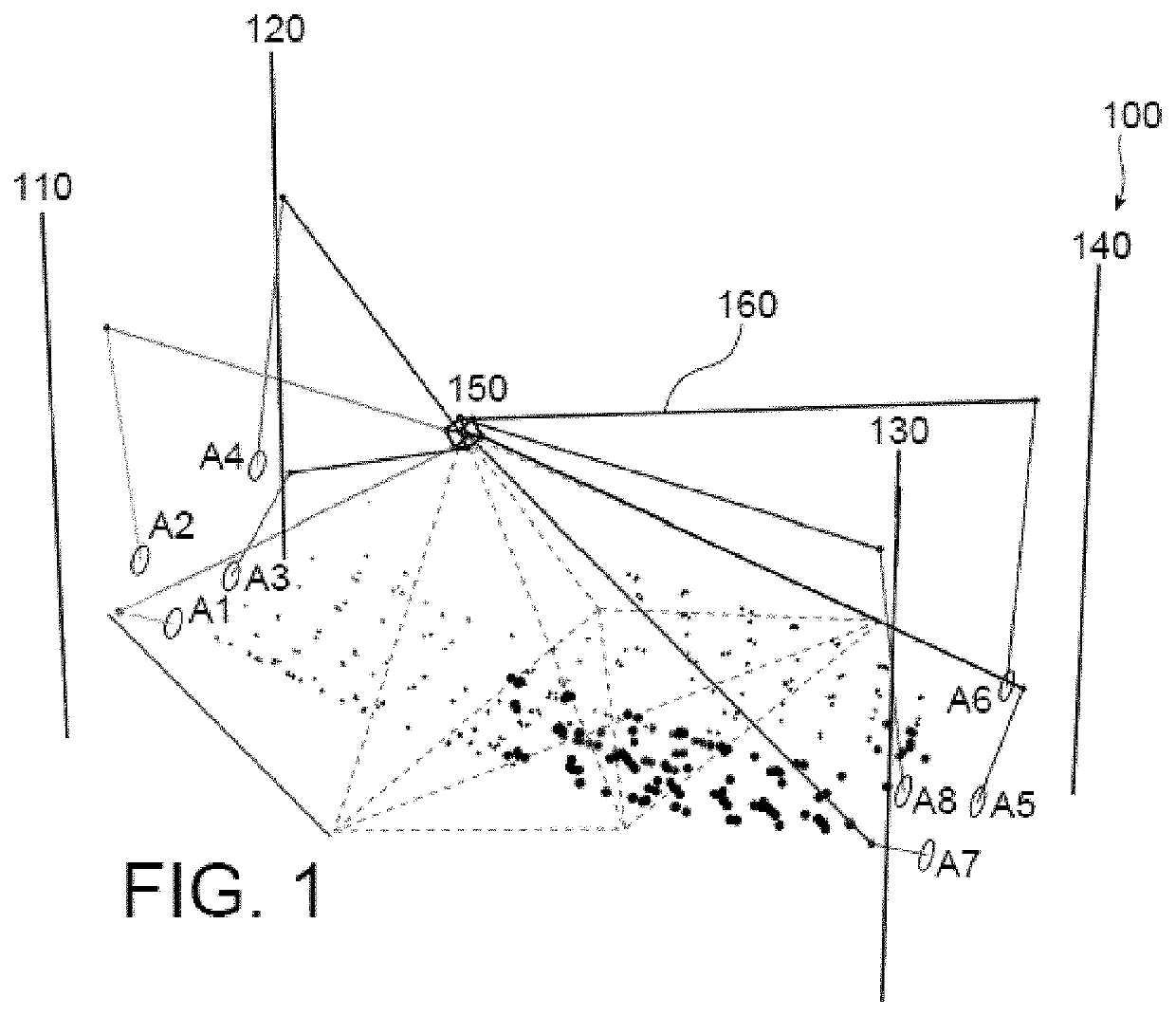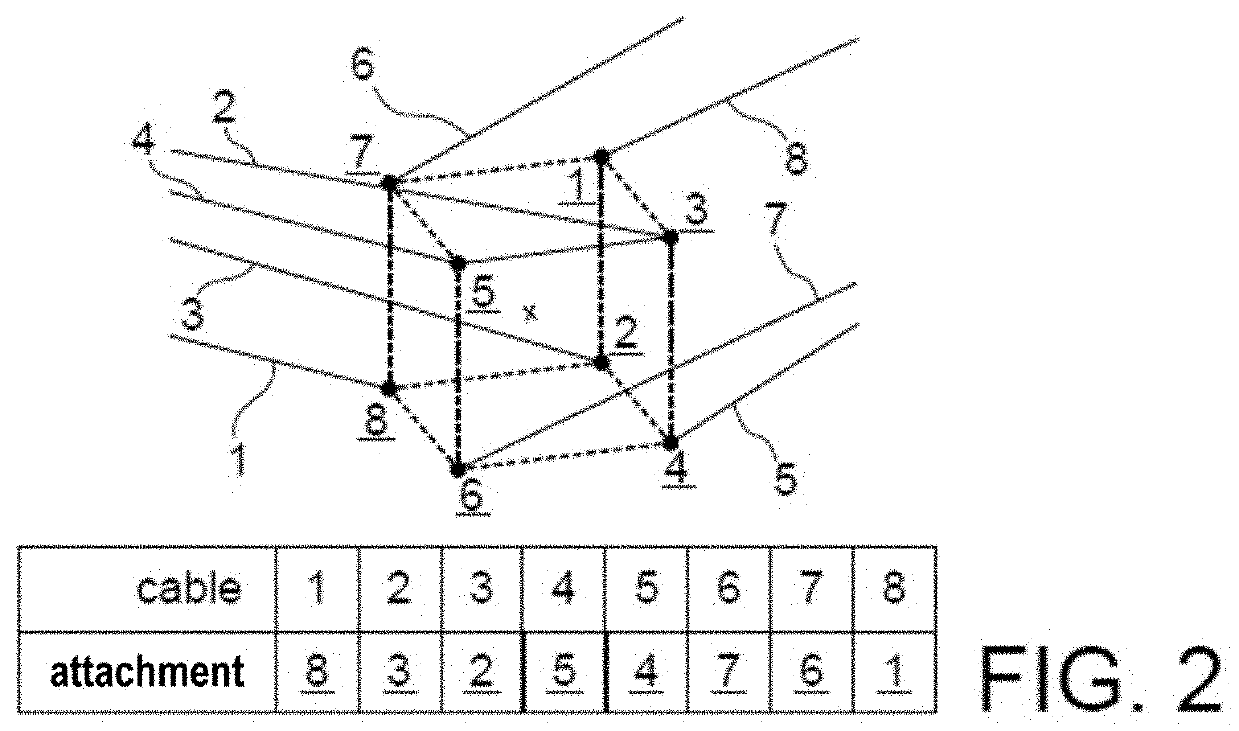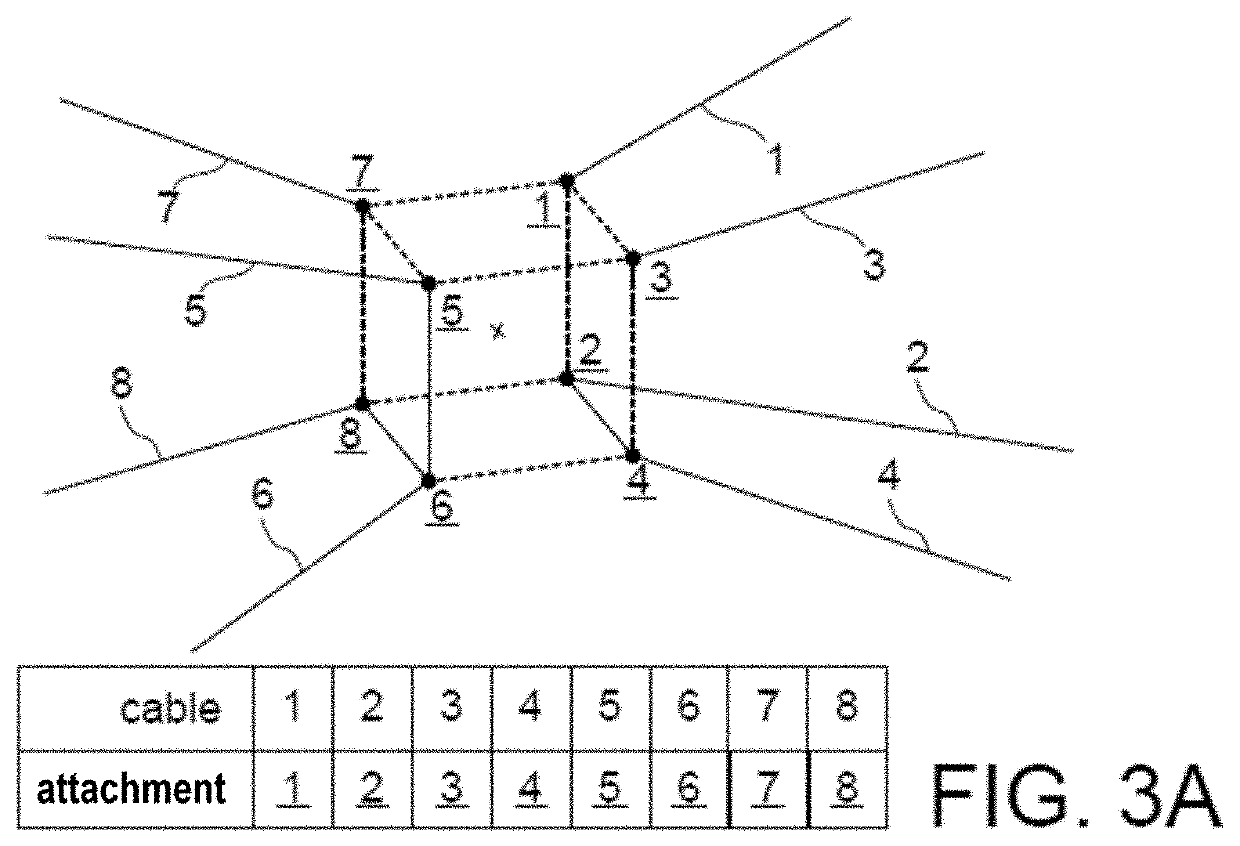Photogrammetric cable robot
a photogrammetric and cable robot technology, applied in the field of photogrammetry, can solve the problem of complex task of adapting to photogrammetry
- Summary
- Abstract
- Description
- Claims
- Application Information
AI Technical Summary
Benefits of technology
Problems solved by technology
Method used
Image
Examples
Embodiment Construction
[0031]Hereinafter, a photogrammetric cable robot as described in the introductory part will be considered.
[0032]Such a robot is schematically represented in FIG. 1. It comprises a frame, 100, here comprising four vertical masts, 110, 120, 130, 140, for example, forming part of a metal structure.
[0033]The mobile platform (or nacelle), 150, schematically represented here in the form of a cube, is linked to the frame by eight cables, 160, respectively attached to the attachment points of the platform (here the vertices of the cube), a pair of cables being associated with a mast and each cable extending from its attachment point on the platform to an anchor point (generally an actuator such as a winch for example), passing through its exit point (return pulley or eyelet). The anchor points are designated here by A1-A8 and the exit points are designated by EX1-EX8. Advantageously, each return pulley can pivot about the axis of the mast on which it is mounted, so that its groove is always...
PUM
 Login to View More
Login to View More Abstract
Description
Claims
Application Information
 Login to View More
Login to View More - R&D
- Intellectual Property
- Life Sciences
- Materials
- Tech Scout
- Unparalleled Data Quality
- Higher Quality Content
- 60% Fewer Hallucinations
Browse by: Latest US Patents, China's latest patents, Technical Efficacy Thesaurus, Application Domain, Technology Topic, Popular Technical Reports.
© 2025 PatSnap. All rights reserved.Legal|Privacy policy|Modern Slavery Act Transparency Statement|Sitemap|About US| Contact US: help@patsnap.com



